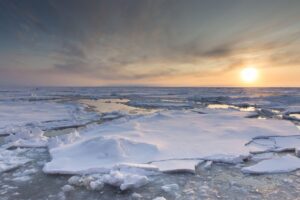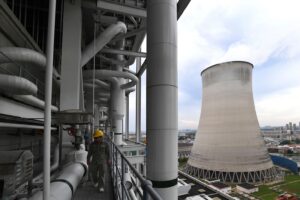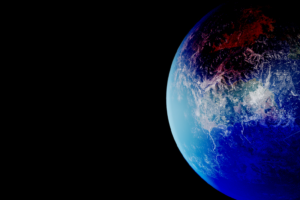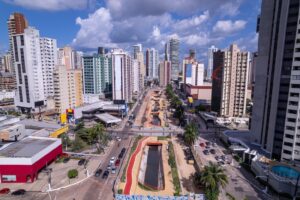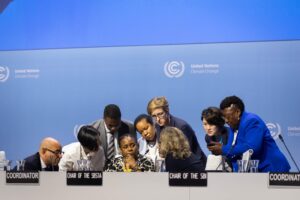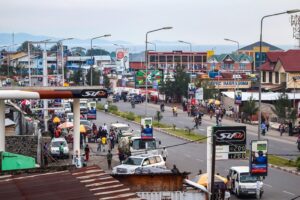Removing carbon dioxide (CO2) from the atmosphere is widely expected to play a key role in meeting the goals of the Paris Agreement.
But this will only be effective for slowing climate change if the CO2 can be stored securely and indefinitely.
This requires “geological carbon storage”, where captured CO2 is injected deep underground, where it can stay trapped for thousands of years.
While the current deployment of CO2 removal (CDR) technologies around the world is small, almost all facilities aim to store captured CO2 in sedimentary basins.
However, in our study in Nature, we show that current policy approaches to using these formations on a larger scale could be suffering from a false sense of abundance.
We find that – once technical, social and environmental risks are considered – the world’s available reserves of geological carbon storage are significantly more limited than most estimates suggest.
Our research shows that, of nearly 12,000bn tonnes of CO2 (GtCO2) of theoretical carbon storage capacity, just 1,460GtCO2 is risk-free.
Significantly, we find that, if all available safe carbon storage capacity were used for CO2 removal, this would contribute to only a 0.7C reduction in global warming.
In short, geological carbon storage is not limitless – on the contrary, its practical potential is a rather scarce planetary resource.
From technical potential to prudent limits
When studies estimate where carbon could be stored for the long term, they typically start by looking at all sedimentary basins worldwide to find those that are mature and stable.
However, norms of international environmental law indicate that high standards of due diligence must be applied to prevent transboundary environmental harm. As scientists, we were therefore interested in understanding how much storage capacity would be available when looking through a precautionary lens.
Our study develops the first global estimate of safe and durable carbon storage that takes into account social, environmental and technical risks – in addition to the geological qualities of the basins.
Rather than taking raw geological capacity at face value, we screen the potential locations for a number of factors:
- Seismic hazards
- Groundwater contamination.
- Proximity to population centres.
- Biodiversity protections, such as environmentally protected areas and the Arctic and Antarctic circles.
- Engineering limitations, such as basin depths that are too shallow to store carbon indefinitely or too deep underground and locations too deep in the ocean.
- Political feasibility, such as maritime areas outside of national jurisdictions or disputed geographical areas.
The results of our assessment are stark. We find that, out of nearly 12,000GtCO2 of theoretical carbon storage capacity in sedimentary basins, just 1,460GtCO2 can be considered robust for climate planning purposes.
We refer to this as “prudent” storage capacity.
This is an order of magnitude less than commonly-cited figures.
In 2005, the Intergovernmental Panel on Climate Change’s (IPCC’s) special report on carbon capture and storage estimated that there is a “technical potential of at least about 2,000GtCO2…of storage capacity in geological formations”.
Over the two decades since, estimates have ballooned to 10,000-40,000GtCO2, depending on the academic or industry source that is consulted.
What this means for warming limits
Our research finds that if all reserves of “prudent” storage were used solely for removing CO2 from the atmosphere, they would enable – at most – a 0.7C reduction in global temperatures.
This falls to as little as 0.4C if we conservatively take the lower end of the likely (>66%) range of how much warming or cooling we expect per tonne of CO2 emitted or removed, respectively.
For the first time, our new study provides an estimate for an upper limit for how much past warming could be reversed through geological storage.
However, under most low-carbon pathways available in the academic and technical literature and assessed by the Intergovernmental Panel on Climate Change, this prudent geological storage limit would be used up before 2200 – and some by 2100.
In many cases, storage is not used to draw down atmospheric CO2, but to balance the continued production of greenhouse gas and carbon pollution from human activities.
And yet, without sharp near-term cuts in gross emissions, the likely overshoot of the Paris Agreement’s 1.5C warming limit could prove irreversible.
Equity and responsibility
The maps below show how prudent storage capacity – for offshore (left) and onshore (right) basins – is not evenly distributed.

The “prudent” global storage potential (in GtCO2) for offshore (left) and onshore (right) basins, by individual countries. Darker shading indicates a greater amount of storage capacity. Source: Gidden et al. (2025)
Much of it is found in large, fossil-fuel-producing nations, such as the US, Australia, Russia and Saudi Arabia. These countries are among the world’s biggest historical emitters.
(This is not a coincidence, as these nations’ fossil-fuel-based economies are the result of relatively easily reachable geological deposits.)
However, the reality that the nations most responsible for emissions also appear best placed to store them raises equity concerns. Nations who benefitted from enabling carbon pollution would now also benefit from the clean up.
Other countries, such as Brazil and the Democratic Republic of the Congo, have substantial storage, but little domestic incentive to use it unless compensated.
Meanwhile, emissions-intensive nations would now be first in line to transform themselves from extractors to large-scale injectors of carbon – and could benefit from new business opportunities, often paid for by the public purse.
However, sovereign wealth funds – state-owned investment funds, often built on fossil revenues – could play a role in financing this shift, in line with the “polluter pays” principle.
Planning for scarcity
Treating storage as a finite and scarce resource has a knock-on effect for climate policy.
For example, governments would need to decide explicitly how they intend to allocate limited carbon storage capacity – should storage capacity be used to abate residual, industrial and fossil-fuel emissions, or for CO2 that has been directly pulled from the atmosphere?
Norms of international environmental law – and the recent “advisory opinion” on climate change from the International Court of Justice – provide guidance as to what countries ought to do. The principle of harm prevention indicates that risks of climate harm should be minimised where possible.
To limit risks to implementing climate targets, carbon capture and storage (CCS) should be seen as a complement to – but not a substitute – for rapid emissions cuts. This recommendation is not new – it has long been called for by researchers looking at the trade-offs and negative side-effects of specific negative emissions technologies, including the impacts poorly governed deployment of these technologies can have on biodiversity and food security.
Our geological storage estimate represents an assessment of reserves today – but this is likely to change with time as knowledge, preferences and governance of CO2 storage change.
CDR technologies that provide alternatives to geological storage, such as mineralisation in basalt, show promise. However, these technologies remain at pilot scale, with only a few million tonnes stored to date.
Climate strategies that rely on nascent CDR technologies would not constitute a strategy that minimises risks and potential harm to today’s and future generations.
The bottom line
Geological carbon storage is not a limitless backstop – and assuming otherwise puts the world at risk of irreversibly exceeding the Paris Agreement’s 1.5C threshold for global warming.
However, at the same time, carbon storage will almost certainly play a pivotal role in any future where global “net-zero” CO2 or greenhouse gas emissions is achieved.
By acknowledging the scarcity of carbon storage – and designating reserves for essential and strategic uses – governments can limit the risks of harm to people and the planet.
The post Guest post: How the role of carbon storage has been hugely overestimated appeared first on Carbon Brief.
Guest post: How the role of carbon storage has been hugely overestimated
Greenhouse Gases
DeBriefed 7 November 2025: Belém COP begins; UN warns of 1.5C breach; changing roles of climate scientists
Welcome to Carbon Brief’s DeBriefed.
An essential guide to the week’s key developments relating to climate change.
This week
Eve of COP30
MULTILATERAL HOPES A gathering of world leaders kicked off in Belém, Brazil, ahead of the official opening of COP30 next week. The leaders of China, the US and India – the “planet’s three biggest polluters” – are “notably absent” from the two-day leaders summit, reported the Associated Press. Some Latin American leaders “were openly critical” of the US president’s stance on climate change in their speeches at the “diminished” summit, noted the Financial Times.
‘MORAL FAILURE’: Speaking at the world leaders summit, UN secretary-general António Guterres described failing to remain below 1.5C as a “moral failure and deadly negligence”, reported the Guardian. Guterres added: “Every fraction of a degree means more hunger, displacement and loss – especially for those least responsible.” The UN chief’s speech came as the World Meteorological Organization confirmed that 2025 is “on track to be the second or third warmest globally”, noted Reuters.
‘POSITIVE TIPPING POINT’: The Brazilian COP presidency published a “Baku to Belém roadmap” detailing how climate finance for developing nations could be scaled up to $1.3tn a year by 2035, Climate Home News reported. The roadmap was published ahead of the UN climate talks, but will not be formally discussed as part of the negotiations, the outlet added. Read Carbon Brief’s summary of what the roadmap means for climate finance.
FORESTS NOT FOREVER: Brazil also launched its Tropical Forests Forever Facility (TFFF) this week, said Agence France-Presse, designed to help tropical countries protect their forests. Norway has joined France and Brazil in investing in the fund, while Germany will announce its contribution on Friday, noted Bloomberg. The Guardian dubbed the UK’s decision to opt out as “a major letdown”. For more on the TFFF, see Carbon Brief’s explainer.
UN report says world is heading for 2.8C
UNFULFILLING: The United Nations Environment Programme (UNEP) annual “emissions gap” report warned that global temperature rise could be heading for 2.8C this century, if only current policies are fulfilled, the Financial Times reported. The rise could be limited to 2.5C, if unconditional national pledges are met in full – or to 2.3C, if pledges conditional on financial support are put into action, the newspaper noted.
STALLED PROGRESS: The world’s warming trajectory is now “0.3C lower than it was a year ago…meaning new plans announced this year have done little to move the needle”, noted Reuters. Some of this progress will be “cancelled” out, the New York Times added, once the US withdrawal from the Paris Agreement takes effect. See Carbon Brief’s in-depth coverage of the UNEP report.
Around the world
- WATERED DOWN: The EU finally confirmed a “significantly weakened” plan to cut emissions to 90% below 1990 levels by 2040, reported the Financial Times.
- DEADLY DISASTER: The Philippines is in a state of emergency after Typhoon Kalmaegi left at least 114 people dead and nearly 130 missing.
- DROPPING COMMITMENTS: The junior partner in Australia’s opposition Coalition – the Nationals – has formally abandoned a commitment to reach net-zero emissions by 2050, reported ABC News.
- MAYORAL WIN: Zohran Mamdani won New York City’s mayoral election, having “refram[ed] climate policy as a quality-of-life issue”, Inside Climate News reported.
100
The number of proposed indicators to track progress towards the “global goal on adaptation” that will be negotiated at COP, according to Carbon Brief‘s new Q&A.
Latest climate research
- Rising temperatures could affect the muscles that Arctic bumblebees use to generate their “charismatic buzz” | Nature Communications
- The release of CO2 from the the Southern Ocean has been “underestimated” by up to 40% in previous studies | Science
- Outdoor heat stress has led to a 10% decline in labour capacity in “rural to urban migration hotspots” in India | Environmental Research Letters
(For more, see Carbon Brief’s in-depth daily summaries of the top climate news stories on Monday, Tuesday, Wednesday, Thursday and Friday.)
Captured
IPCC funding shortfall

Carbon Brief covered the latest meeting of the Intergovernmental Panel on Climate Change (IPCC) in Lima, Peru. Alongside funding from parent organisations the World Meteorological Organization (WMO) and UN Environment Programme, voluntary contributions by countries help pay for the work of the IPCC. The biggest contributors so far in 2025 are Norway, the UNFCCC, Canada and the WMO. The red bars show how US contributions have dropped off during Trump’s two terms in office. Having provided 30% of direct contributions throughout the IPCC’s history, the US has not made a contribution so far this year.
Spotlight
‘With knowledge comes responsibility’: the changing role of climate scientists in a warming world
This week, Carbon Brief speaks to a researcher about the different ways climate scientists are feeling and taking responsibility for the knowledge they hold.

From calling for action in Belém to defending science against attempts to discredit or downplay it, climate scientists are responding to world events in ever-more visible ways.
Dr Friederike Hartz is a research and policy associate at University College London.
For her PhD thesis, carried out at the University of Cambridge, Hartz interviewed 77 experts who participated in IPCC reports, the world’s most authoritative global assessments of climate science coordinated by the UN.
‘You can’t unsee it’
Hartz’s findings show how climate scientists can feel a sense of responsibility, as those who bear the knowledge and evidence of climate change.
Some interviewees felt a sense of “representational responsibility” – motivated by the wish to improve the lives of the vulnerable or underrepresented communities they belong to.
Others expressed a sense of “intergenerational responsibility”, resolving to contribute to a better world for their children and grandchildren.
Hartz called this the “inescapability” of climate knowledge. She told Carbon Brief:
“Once you know, you know. As one of my interviewees shared with me, you simply can’t unsee it. Especially as a scientist, you’re trained to see those things.”
Taking responsibility
Hartz’s research looked at what it means for climate scientists to act on the sense of responsibility they feel, beyond producing the science itself.
Some take part in formal IPCC assessments. Others “have come to accept and further embrace a responsibility for communicating” their knowledge, Hartz noted in her paper.
Beyond the IPCC, some scientists take on additional responsibility for evidence-based “advocacy” or even call for more “activism” in science.
Similarly, on the grounds that “with knowledge comes responsibility”, some have called for scientists to “step beyond their traditional roles” or act as “sentinels” to alert society to threats. Hartz told Carbon Brief:
“This is all part of what I call ‘science enactment’: putting science into action or putting it in the hands of other people who can act on it.”
Navigating what it means to take responsibility is a very individual thing, said Hartz, which speaks to late biologist Stephen Schneider’s “double ethical bind” – the balance between a commitment to the “scientific method” and the “wish to see the world a better place”.
Lived experience
Hartz pointed to research suggesting the traditional view – that engaging in activism or advocacy can damage a scientist’s credibility – may be unwarranted. But there can be other downsides, she noted, including the emotional toll. As one of her interviewees expressed it:
“As scientists, we are not droids…And, so, to say that we are not at all influenced by what is going on in science is not true.”
Hartz suggested that scientists can simultaneously experience feelings of enthusiasm about their work and frustration about its uptake. Or as she noted in her thesis, citing a seminal political science study:
“Knowledge can only speak ‘truth to power’ to the extent that ‘power listens to truth’.”
Watch, read, listen
‘WHITE HOUSE EFFECT’: A Netflix documentary looked at how a “crucial opportunity” to take climate action was “deliberately undermined” during the George HW Bush administration.
‘COP OF TRUTH’: Brazil’s president, Luiz Inácio Lula da Silva, wrote in the Guardian ahead of COP30 about the need to act “with the urgency the climate crisis demands”.
HUMAN STORIES: A video by the Grantham Institute at Imperial College London explored the pivotal moments leading to the historic establishment of a loss and damage fund.
Coming up
- 10 November: UN Climate Change conference (COP30) begins in Belém, Brazil
- 12 November: IEA World Energy Outlook 2025 launch, Paris
- 13 November: Global Carbon Budget annual update released
Pick of the jobs
- Project Drawdown, program manager, research fellow and senior analyst | Salary: Various. Location: Remote
- UK Centre for Ecology and Hydrology, laboratory assistant | £26,206 – £27,808. Location: Lancaster, UK
- Ofwat, Wales environmental policy lead | £57,783 – £72,000. Location: Cardiff, UK
- UNEP, mitigation expert on sand and dust storms | Salary: Not specified. Location: Riyadh, Saudi Arabia
- Conservation International, senior manager, climate & landscape restoration | Salary: Not specified. Location: Acornhoek, South Africa.
DeBriefed is edited by Daisy Dunne. Please send any tips or feedback to debriefed@carbonbrief.org.
This is an online version of Carbon Brief’s weekly DeBriefed email newsletter. Subscribe for free here.
The post DeBriefed 7 November 2025: Belém COP begins; UN warns of 1.5C breach; changing roles of climate scientists appeared first on Carbon Brief.
Greenhouse Gases
Interactive: Tracking negotiating texts at the COP30 climate summit
The centrepiece of every UN climate summit is for countries to negotiate the wording of a large number of legal agreements – and COP30 in the Brazilian city of Belém is no different.
These texts are hashed out behind closed doors in the “blue zone” at the COP, where diplomats from nearly 200 nations haggle over every paragraph and each individual verb.
Over the course of the two-week summit, negotiators will be trying to reach consensus on more than 100 separate agreements – but, first, they must agree which issues are on the agenda.
The complexity of this process can make it challenging to keep track of what countries are fighting about and how negotiations are progressing.
Carbon Brief’s real-time text tracker, below, offers a helping hand by decoding the agenda and keeping a searchable record of every document for each part of the negotiations.
The first column of the interactive tracker lists the topic of each agenda item, with further columns including dates, page counts and links to the original PDFs.
The table is searchable via the interactive text box and can be sorted using the arrow icons.
Key negotiations at COP30 include those on the “global goal on adaptation”, as well as the question of whether or how to reform the COP process itself, a discussion that appears on the agenda under the innocuous heading: “Arrangements for intergovernmental meetings.”
While most of the items on the agenda are agreed in advance, parties can suggest late additions. These must be signed off before negotiations can begin, often resulting in an “agenda fight”.
Recent negotiations have all started with an agenda fight over two proposals from the Like-Minded Developing Countries (LMDCs) – a group that includes China, India and Saudi Arabia.
The LMDC proposals relate to the provision of climate finance by developed countries – under Article 9.1 of the Paris Agreement – and to what they describe as “unilateral trade measures”, a term understood to include the EU’s carbon border adjustment mechanism (CBAM).
The LMDCs have asked again that these issues be included on the agenda at COP30.
Ahead of the opening of the summit, Carbon Brief’s text tracker counts 111 substantive items on the agenda, not including procedural matters, such as the election of COP officials.
However, it is likely that not all of these items will ultimately end up being included.
The figure below illustrates the status of the COP30 negotiations overall, in a traffic-light format. Each agenda item is colour-coded according to its current status.
For topics shown in red, negotiators have not yet managed to put anything down on paper, perhaps because parties have fundamentally different views on how they should proceed.
For items in orange, negotiators are working on an “informal text”, which is an early draft setting out the views of different parties, but not yet expressed in formal legal language.
Once a draft legal agreement becomes available, topics will be colour-coded yellow. At this point, areas of remaining disagreement will be denoted in the text with [square brackets] and “options”.
As such, texts with many square brackets or options tend to be an indicator of a high level of disagreement between parties within this negotiation track. For this reason, the tracker table above counts and displays the number of outstanding brackets and options in each document.
During the course of the summit, negotiators may work through multiple iterations of text on each agenda item. These documents may include “bridging text”, designed to resolve differences of opinion and to find a “landing zone” that all groups can agree on.
Agreement is reached on a given topic once all brackets and options have been resolved, at which point the issue will be coloured green in Carbon Brief’s traffic-light chart.
Where agreement cannot be reached, discussions may be subject to “rule 16”, meaning negotiations are postponed until the next session. These topics are colour-coded grey.
The figure below gives an at-a-glance overview of the status of the main topics up for negotiation.
As parties narrow down the options and brackets towards the end of each summit, they start to generate “clean” texts, which contain no areas of disagreement and can be converted into “draft decisions” that are ready for formal adoption at the closing plenary of the meeting.
Finally, at the closing plenary, each draft decision must be gavelled through by the COP president, signifying its formal adoption as a legal agreement and outcome of the summit.
This last step is usually a formality, but dramatic exceptions are possible.
During the closing plenary at COP29, the president of the meeting failed to adopt a deal relating to the “global stocktake” from 2023, which had called for “transitioning away” from fossil fuels.
Carbon Brief also ran text trackers for COP28 and COP29.
The post Interactive: Tracking negotiating texts at the COP30 climate summit appeared first on Carbon Brief.
Interactive: Tracking negotiating texts at the COP30 climate summit
Greenhouse Gases
Ongoing failure to agree AR7 timeline is ‘unprecedented’ in IPCC history
Governments have, once again, failed to agree on a timeline for the Intergovernmental Panel on Climate Change (IPCC) seventh assessment cycle (AR7), two years into the process.
Last week, more than 300 scientists and government officials from around the world met in Lima, Peru for the 63rd session of the IPCC (IPCC-63).
According to the Earth Negotiations Bulletin (ENB), reporting exclusively from inside the four-day meeting, the closed-door talks were characterised by “fraught deliberations” where “once-routine” issues became “deeply controversial and time-consuming”.
Countries reached a compromise on the content of a methodology report on carbon dioxide removal technologies – a sticking point at the last IPCC meeting.
However, the meeting marked the fourth time in a row that delegates could not reach consensus on the timings of the IPCC’s influential three-part assessment report, after deadlocked talks in Hangzhou, China earlier this year and Sofia, Bulgaria and Istanbul, Turkey in 2024.
Observers told Carbon Brief of an atmosphere of “deepening mistrust” at the meeting, as emerging economies clashed with a coalition of small-island states and developed nations amid repeated accusations of “micromanagement”.
IPCC chair Prof Jim Skea reportedly lamented in his closing remarks that “as a category five hurricane [Hurricane Melissa] swept through the Carribean, IPCC-63 was deliberating on pronouns and footnotes”.
One former IPCC author tells Carbon Brief that certain countries’ opposition to agreeing a “deadline for AR7” was a “clear tactic for playing down the importance of IPCC climate science in decision-making on climate change”.
Historic splits
Each assessment cycle, the IPCC publishes three “working group” reports that focus on climate science (WG1), impacts and adaptation (WG2) and mitigation (WG3). It also publishes a small number of special reports and methodology reports.
The IPCC’s current assessment cycle has been underway since July 2023, with the authors for its three headline reports confirmed earlier this year.
It is atypical for the IPCC to have not yet agreed when these reports would be published so far into an assessment cycle. The workplans for AR5 and AR6 were “agreed with little difficulty”, the ENB notes in its summary of the event, adding:
“The debate about the timeline is unprecedented in the history of the IPCC.”
There are, broadly speaking, two camps in the debate around timelines for AR7.
The first wants a timeline that would align the publication of the IPCC’s three headline reports, plus special and methodology reports, with the second “global stocktake” (GST).
The GST is an appraisal of global progress on tackling climate change, which takes place every five years under the Paris Agreement. The second GST is scheduled to conclude at COP33 at the end of 2028, so that its findings can inform the fourth round of national climate pledges due a few years later.
Other countries, however, have advocated for a longer timeline. Among their concerns are the potential burden reviewing reports back-to-back could place on more resource-strapped countries, as well as whether the current schedule offers enough time for gaps in scientific literature to be filled.
As proceedings kicked off in Peru, the IPCC proposed a timeline for AR7 which would see all three of its headline reports published in 2028, with approval sessions earmarked for May, June and July of that year for the three working group reports.
WGI co-chair Dr Robert Vautard noted that the ongoing uncertainty on timelines was stressful for both the authors of reports, as well as for scientists wishing to submit research for the cycle, according to the ENB.
The delegation from Antigua and Barbuda, meanwhile, noted that agreement on the timeline is typically procedural and “not negotiated by governments”. It also said the proposed cycle length of around six-and-a-half years was consistent with the IPCC’s last two assessment cycles.

‘Compromise’ timeline
Throughout the four-day meeting, positions on both sides on the debate around AR7 remained “entrenched”, the ENB notes.
A “majority” of countries were in favour of a workplan which would align AR7 with the GST, the ENB says. However, this group was opposed by a “smaller, but growing” number of countries in favour of a less compressed timeline.
Early on in proceedings, for example, Kenya described a slower timeline as a “great equaliser” and said a more compressed timeline did not favour authors, nor the coordinating agencies, from developing countries, ENB says.
Meanwhile, India argued that the GST was “extraneous” to the IPCC and said there were no formal IPCC rules about aligning with the stocktaking exercise, according to ENB. Algeria, China, Libya, India, Russia, Saudi Arabia and South Africa also reportedly voiced their opposition to the IPCC’s proposals.
Inclusivity concerns were also cited by countries in favour of the IPCC’s timeline. For example, the small-island state of Vanuatu reportedly said that delaying the reports would deprive countries of important scientific information ahead of key international meetings.
Antigua and Barbuda, Australia, the Bahamas, France, the Gambia, Korea and Nepal were among the countries to speak up in favour of the IPCC’s proposed timeline, according to ENB.
Simon Steill, executive director of the UN Framework Convention on Climate Change (UNFCCC), urged countries to agree on a timeline which aligned AR7 with the GST. In his opening address to the Lima meeting, he said:
“Taken together, the reports will be indispensable and I will continue to urge all countries to agree on timelines that ensure all three assessments inform the second global stocktake.
“Because the stocktake is not just a technical exercise. It is a crucial moment for the world to recognise the state of play, reaffirm its commitment to Paris and respond with action and support at the pace and scale that science demands.”
The ENB reports that a contact group was set up on Monday to work through the issue, co-chaired by Brazil and Denmark.
On Tuesday, a revised timeline for AR7 was presented by WG1 co-chair Dr Xiaoye Zhang and WG2 co-chair Dr Bart Van den Hurk, which took into account deliberations from the contact group, the ENB says. It set out a number of changes to the initial timeline, concentrated at the end of the cycle so as to address government concerns while limiting impacts on report authors.
This included spacing out approval sessions – where the final reports are signed off line by line – so that WG2 would be held in July 2028 (instead of June) and WG3 in September (instead of July). It also set out an extension of expert and government review periods for report drafts.
Discussion of the revised schedule was deferred until Wednesday at the request of Ghana, Kenya, India, Russia and Saudi Arabia.
As talks resumed, a number of emerging-economy countries spoke out against the updated timeline, including Algeria, Jordan, Morocco, Tunisia and Zimbabwe, ENB notes.
Russia said that aligning the work of the IPCC with the UNFCCC would send a “negative signal”, ENB says, whereas China suggested that the timeline would put “pressure” on developing countries. South Africa similarly argued that the timeline would “harm” the inclusivity and geographic representativeness of the reports, according to ENB.
Among the countries in favour of the revised timeline were small-island developing states Haiti, Jamaica, Sao Tome and Principe and Vanuatu, as well developed economies Australia, Finland, Italy, Ireland, New Zealand and the UK, ENB says.
Grenada is quoted by ENB as describing the new timeline constituted a “compromise of a compromise”. The country also emphasised that it was supported by a majority of countries across regions and development levels, ENB says.
At the request of certain members of the contact group, WG1’s Vautard presented a visualisation of the new timeline for all three reports and the special report on cities on Wednesday evening. The graphic – seen by Carbon Brief – plots the timeline for “first-order” draft review (by experts), “second-order” draft review (by governments and experts), final government review and panel approval for each report.
Vautard noted that first-order draft reviews of the WG1 and WG2 reports overlapped “intentionally”, to allow experts to see both drafts at once.
(The request for a visualisation prompted accusations – not for the first time at the meeting – that certain countries were drawing the IPCC process into “micromanagement”, the ENB notes.)
The visualisation was followed by a new wave of objections from countries, who argued against a timeline where review periods for different reports overlapped with each other and UNFCCC meetings, according to ENB.
Among them were Russia and China, who argued that AR7 should be extended to 2029, ENB says. (Russia reportedly said it would “consider a plan” to deliver the overarching synthesis report by December 2029 – if its concerns were addressed.)
On the other hand, Antigua and Barbuda argued that avoiding any overlaps would not be feasible and expressed concerns that certain countries’ interventions seemed to be aimed “more at delay than progress”, the ENB notes.
Skea said he “struggled to see” why consecutive and overlapping reviews were a problem, according to the ENB. He noted that the IPCC rulebook states that panel and working group sessions should be scheduled to coordinate with, “to the extent possible, with other related international meetings”.
Lindsey Fielder-Cook, interim deputy director and the representative for climate change at the Quaker UN Office, was an observer to the talks. She tells Carbon Brief that “blocking” governments had “serious and genuine concerns” around the lack of equity inclusion in climate modelling and a failure of co-chairs to “sufficiently engage” with their proposals.
However, she says these countries also cited “structural” concerns around timing and capacity that “could be overcome” and speculated that these were “used to cover [for] what the countries do not say publicly”. She adds:
“For example, concerns include capacity and vacation times during [report] review times – which were not a concern raised by small-island developing states and many least-developed countries with even less capacity, [as well as concerns about] developing country scientific input, which the IPCC has made genuine efforts to improve.”
On Thursday evening, the facilitators of the contact group reported that no consensus had been reached, the ENB notes. Consequently, the IPCC agreed to – once again – defer decisions on the rest of the workplan to a future session.
Countries agreed that working groups should press on with activities and author meetings detailed in the 2026 budget.
(This outcome – where the IPCC plans in annual increments – had been described earlier in the week by Skea as the “worst option”. Nepal, meanwhile, said this result would “harm the IPCC’s legitimacy”.)
Routine issues ‘have become controversial’
This is now the fourth meeting in a row – following Istanbul, Sofia and Hangzhou – where the timeline for producing, reviewing and publishing the IPCC’s reports in AR7 has not been agreed.
In its analysis of the “fraught negotiations” in Lima, the ENB notes that “deep divisions” on the timeline and other procedural issues have “plagued the IPCC during the first two years of its seventh assessment cycle”. It added:
“Issues that were once routine have become deeply controversial and time-consuming.”
The failure to approve the timeline for AR7 was not the only issue on which countries were unable to agree. Approval of the official summaries of the two preceding IPCC meetings was also deferred, after certain countries said they could not sign off on the drafts.
After the previous IPCC meeting in Hangzhou, Skea told Carbon Brief that negotiations over just the outlines of the three AR7 working group reports “had some of the quality of an approval session”, where a finished report is scrutinised line by line.
In Lima, Skea “remarked that these disagreements [over the timeline] are unprecedented so early in an assessment cycle”, the ENB reports.
Throughout the meeting, the ENB records multiple instances of countries voicing their concerns about the implications for the work of the IPCC.
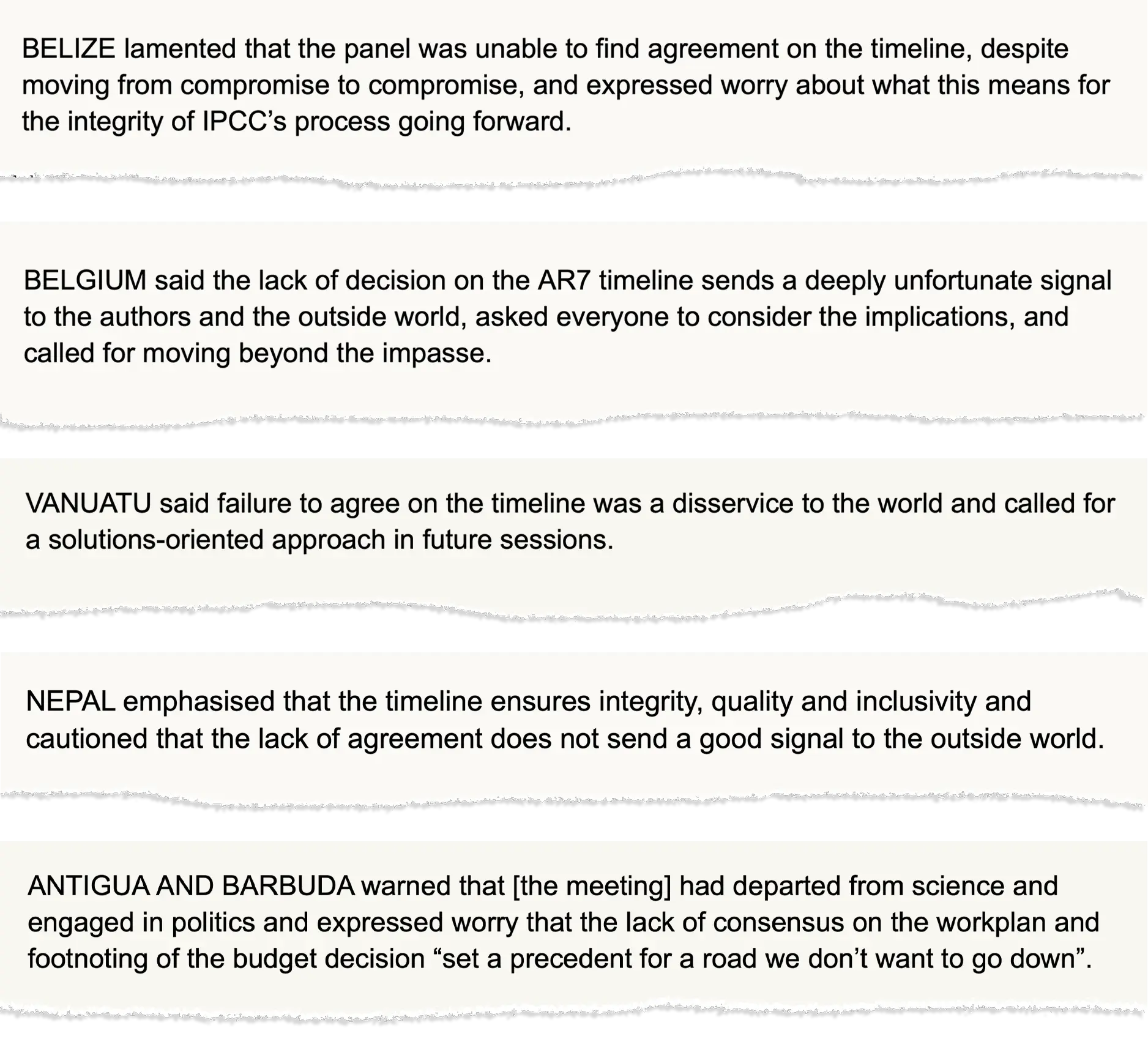
In its analysis of the meeting, the ENB says these concerns reflect “growing tensions within the panel, as “delegates expressed increasing frustration with what they see as inflexible positions”.
The ENB also notes:
“References made in this session to disrespectful interactions among delegates are atypical in the IPCC context and raise concerns that trust the basis for compromise and flexibility may be dwindling in some parts of the IPCC.”
(The IPCC has not responded to Carbon Brief’s multiple interview requests.)
In her observations, Fielder-Cook tells Carbon Brief that the meeting was “actually more relaxed” than recent IPCC sessions. This was “in part due to the gentle and generous hosting of Peru and in part to a sense of resignation on the timeline”.
Nonetheless, she says, the mood in the room was of “concern for the IPCC and its reputation, for its ability to protect science from intensifying political influence”, as well as “concern over the increasing political efforts to influence the scientific output”. She adds:
“While the work will continue, IPCC authors working voluntarily have no clear timeline on their voluntary commitment.”
Prof Lisa Schipper, a professor of development geography at the University of Bonn and IPCC AR6 author, tells Carbon Brief:
“Some countries refusing to set a deadline for the AR7 is a clear tactic for playing down the importance of IPCC climate science in decision-making on climate change. And this will be a problem if the report is done and cannot be approved and used by governments.”
Nonetheless, she adds, “there is plenty of good science being produced and governments are not in any way restricted from using this science in their decision-making”.
Ultimately, though, “we do need a decision on the AR7 timeline”, she says:
“No other single report provides the same evaluation and assessment of this collected knowledge or is able to give an authoritative overview of what we know, what we don’t know, and which future is more likely under different conditions.”
Consensus on CDR
Earlier this year in Hangzhou, governments failed to reach consensus on the outline for a methodology report on carbon dioxide removal (CDR) and carbon capture, utilisation and storage (CCUS) technologies, which is slated for publication in 2027.
This was largely due to disagreements around chapter seven in the proposed outline, a section that would focus on carbon removals from oceans, lakes and rivers.
On the first day in Lima, Takeshi Enoki – a co-chair of the IPCC task force on national greenhouse gas inventories (TFI), which is responsible for producing the report – introduced the outline and workplan for the methodology report.
Enoki explained that discussions about the report would focus on the table of contents and “particularly the proposed volume seven on the direct removal of CO2 from waterbodies”, according to ENB.
Fielder-Cook – the observer from the Quaker UN Office – tells Carbon Brief there was “significant concern” across a “range of developed and developing countries” over language in the initial methodology report outline that “could allow harmful marine geoengineering”.
Antigua and Barbuda, France and Germany were among the countries who opposed the inclusion of a seventh chapter. They cited concerns related to the “effectiveness, scalability, legality and environmental impacts” of marine CDR, the ENB notes.
Some of these countries suggested that the IPCC adopt the outline for “volumes one to six”, “with the possibility of adding to these volumes later”, the ENB says.
However, Saudi Arabia said that all “expert-recognised CDR and CCUS technologies, including marine-based technologies, must be considered”. It called for an outline that “encompasses the full spectrum of these technologies”.
ENB notes that the “point of contention” was whether the IPCC should develop methodologies for measuring and assessing the impacts of all CDR technologies. Some countries argued that the report should be limited to technologies that are “environmentally safe”, while others argued that it is “not the responsibility of a TFI methodology report to make that judgment”.

Skea set up a contact group on the first day of the meeting, facilitated by China and Turkey, to work on the outline of the report.
The following days saw “significant discussion” within the contact group, before delegates reconvened in plenary on Thursday to continue discussing the report, according to the ENB.
Delegates were eventually able to reach a compromise on the outline by agreeing to remove the chapter on direct removal of CO2 from waterbodies from the plan, the ENB reports.
Meanwhile, delegates agreed to hold an expert meeting on alkalinity enhancement – the addition of alkaline substances to seawater, which allows the ocean to take in more carbon from the atmosphere – and direct ocean capture. This meeting will be co-organised by the TFI and the three IPCC working groups.
Funding ‘shortfall’
At the Lima meeting, countries approved the IPCC’s budgets for 2025 and 2026, but also noted “with concern the significantly reduced cash balance” of the IPCC trust fund and the “accelerating decline” in the level of annual voluntary contributions from countries and other organisations, says the ENB.
The IPCC is funded by its parent organisations, the World Meteorological Organization (WMO) and UN Environment Programme (UNEP), along with voluntary contributions from member governments and the UNFCCC.
These contributions feed into the IPCC “trust fund”, which is used to pay for the work of the IPCC. In addition, member countries provide “in-kind” support, such as offering facilities for meetings and hosting the “technical support units” for each working group.
By the end of June, contributions in 2025 amounted to 1.2m Swiss francs (£1.1m) – significantly down compared to the annual totals of previous years. Compared to spending of 2.9m Swiss francs (£2.8m), this leaves a shortfall of around 1.7m Swiss francs (£1.6m) for 2025.
At the start of this year, the balance of the trust fund stood at 17.8m Swiss francs (£16.9m).
The chart below shows the direct contributions from countries and organisations throughout the IPCC’s history and up to the end of June this year.
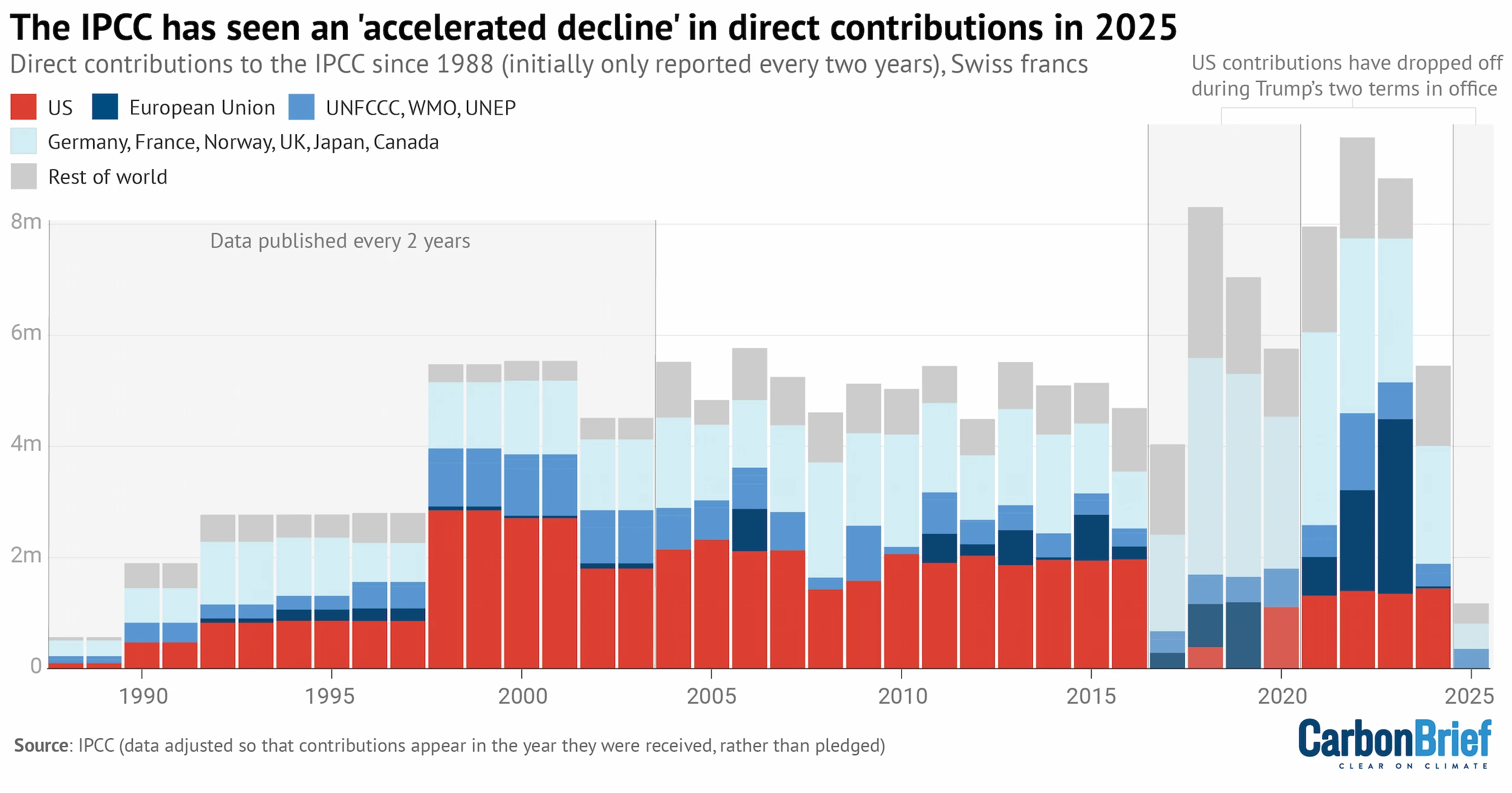
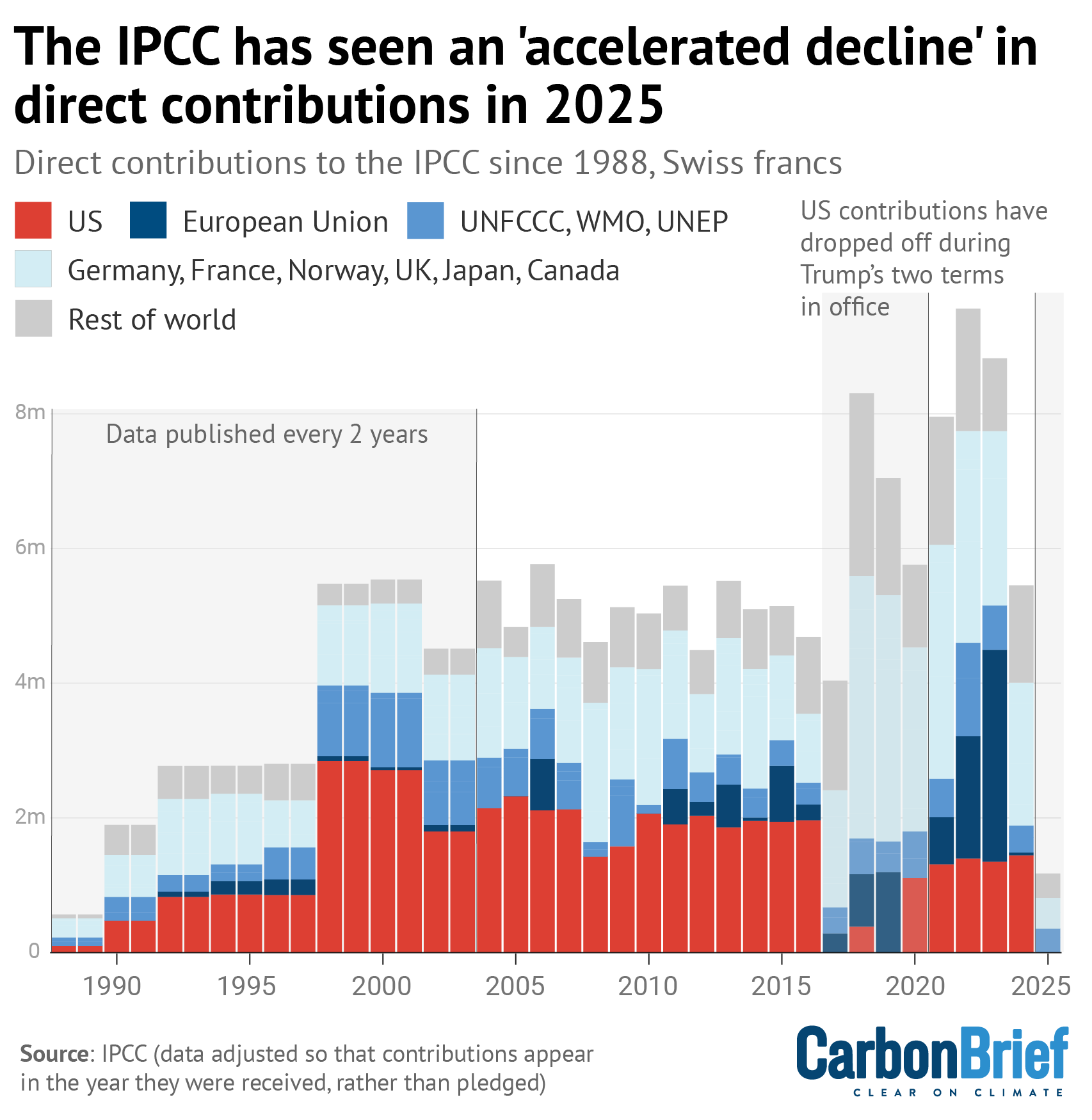
Chart showing the largest direct contributors to the IPCC since its inception in 1988, with the US (red bars), European Union (dark blue) and UNFCCC/WMO/UNEP (mid blue) highlighted. Grey bars show all other contributors combined. Figures for 2025 are January to June inclusive. Figures for 1988-2003 are reported per two years, so these totals have been divided equally between each year. Source: IPCC (2025) and (2010). Contributions have been adjusted, as per IPCC footnotes, so they appear in the year they are received, rather than pledged.
The largest direct contributions to the IPCC trust fund so far this year have come from Norway (244,000 Swiss francs, or £230,000), the UNFCCC (230,000 Swiss francs, or £220,000), Canada (210,000 Swiss francs, or £200,000) and the WMO (125,000 Swiss francs, or £118,000).
Other countries to contribute this year include Australia, New Zealand, Pakistan, Peru, South Korea, Sweden, Trinidad and Tobago, and 213 Swiss francs (£200) from Cambodia.
The US – which has provided 30% of the IPCC’s direct contributions throughout its history – has not made a contribution so far this year.
In its final decision, the panel invited “member countries to make their annual voluntary contributions to the IPCC trust fund and, if possible, to increase [them]”, says the ENB.
Member countries also discussed a proposal from the WMO for the IPCC to pay 300,000 Swiss francs (£280,000) for administrative support that was previously provided as an in-kind contribution.
Given the “deteriorating financial situation” of the IPCC, the ENB reports that a decision on this proposal was deferred – not to the next meeting, but the one after that.
Progress reports and next steps
The Lima meeting was also an opportunity for each IPCC working group to update the rest of the delegates on progress since the last meeting.
All working groups discussed the process of selecting authors for the IPCC’s upcoming seventh assessment, highlighting their efforts to be “inclusive”.
For example, the WG3 co-chair said 52% of the selected WG3 authors are from developing countries, 40% are female and 59% are new to the IPCC.
A WG2 co-chair also reported that six chapter scientists had been selected from more than 1,320 applications for the special report on cities slated for publication in March 2027.
In addition, the WG1 co-chairs outlined their preparations for the first joint-lead author meeting for their assessment report, which will be held in December 2025.
They also laid out plans for a cross-working group “expert meeting” on “Earth system high impact events, tipping points and their consequences”, co-sponsored by the World Climate Research Programme (WCPR).
The meeting also granted “observer status” to 20 new organisations, allowing them to attend IPCC sessions and nominate experts as authors or workshop leads.
The IPCC confirmed that its next meeting will be held in Bangkok, Thailand over 24-27 March 2026.
Skea announced that workshops on “diverse knowledge systems and methods of assessment” will be held in February 2026 at the University of Reading in the UK.
Skea also proposed an expert meeting to “support the transition from conceptual design to technical implementation” of the AR7 WG1 and WG2 interactive atlases.
The atlases are interactive online tools that allow users to explore much of the data underpinning the working group reports.
The meeting was approved, subject to agreement on the budget. It is slated to take place between April and June 2026.
The post Ongoing failure to agree AR7 timeline is ‘unprecedented’ in IPCC history appeared first on Carbon Brief.
Ongoing failure to agree AR7 timeline is ‘unprecedented’ in IPCC history
-
Climate Change3 months ago
Guest post: Why China is still building new coal – and when it might stop
-
Climate Change2 years ago
Spanish-language misinformation on renewable energy spreads online, report shows
-
Greenhouse Gases3 months ago
Guest post: Why China is still building new coal – and when it might stop
-
Climate Change Videos2 years ago
The toxic gas flares fuelling Nigeria’s climate change – BBC News
-

 Greenhouse Gases1 year ago
Greenhouse Gases1 year ago嘉宾来稿:满足中国增长的用电需求 光伏加储能“比新建煤电更实惠”
-

 Climate Change1 year ago
Climate Change1 year ago嘉宾来稿:满足中国增长的用电需求 光伏加储能“比新建煤电更实惠”
-

 Carbon Footprint2 years ago
Carbon Footprint2 years agoUS SEC’s Climate Disclosure Rules Spur Renewed Interest in Carbon Credits
-
Renewable Energy4 months ago
US Grid Strain, Possible Allete Sale



